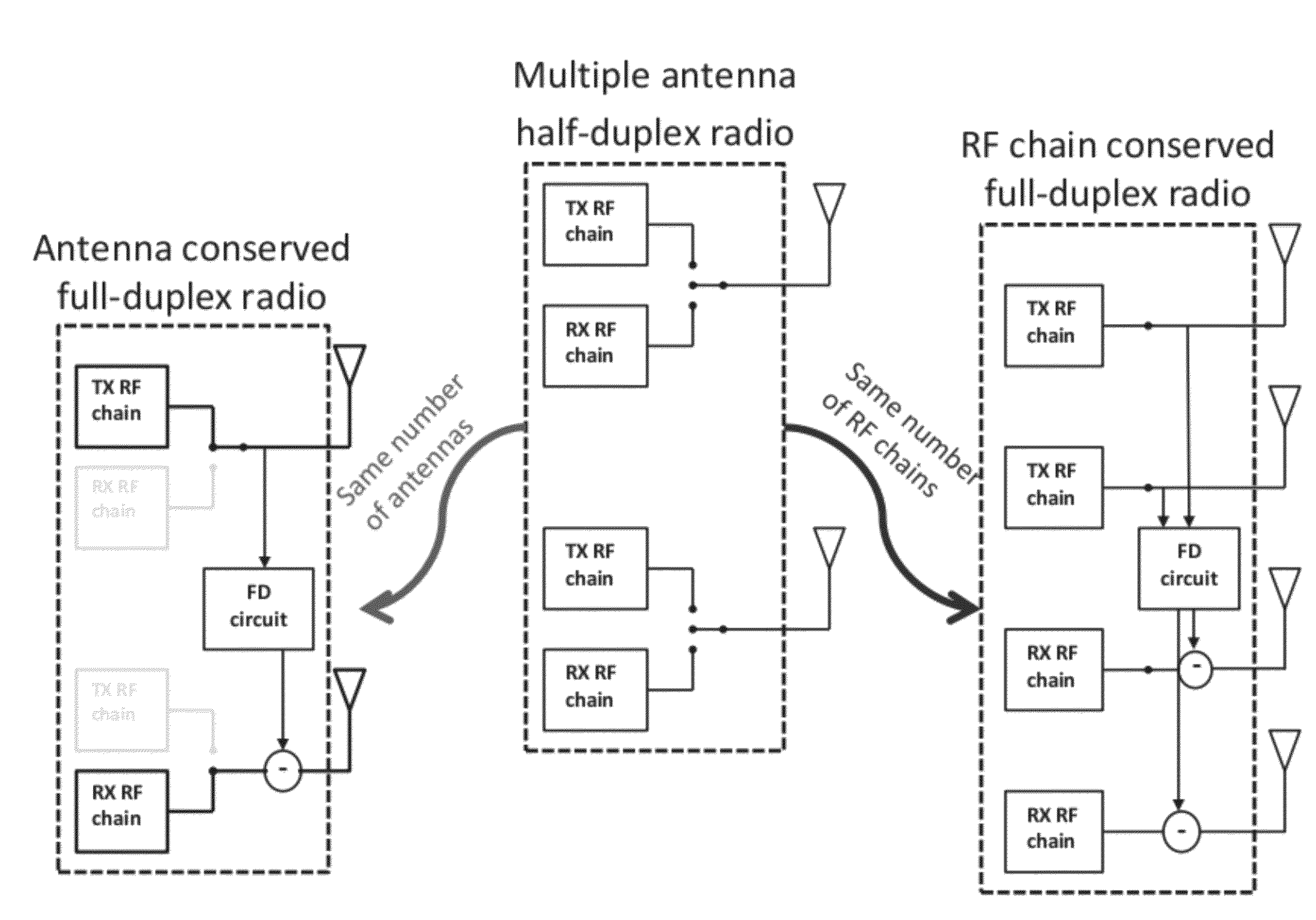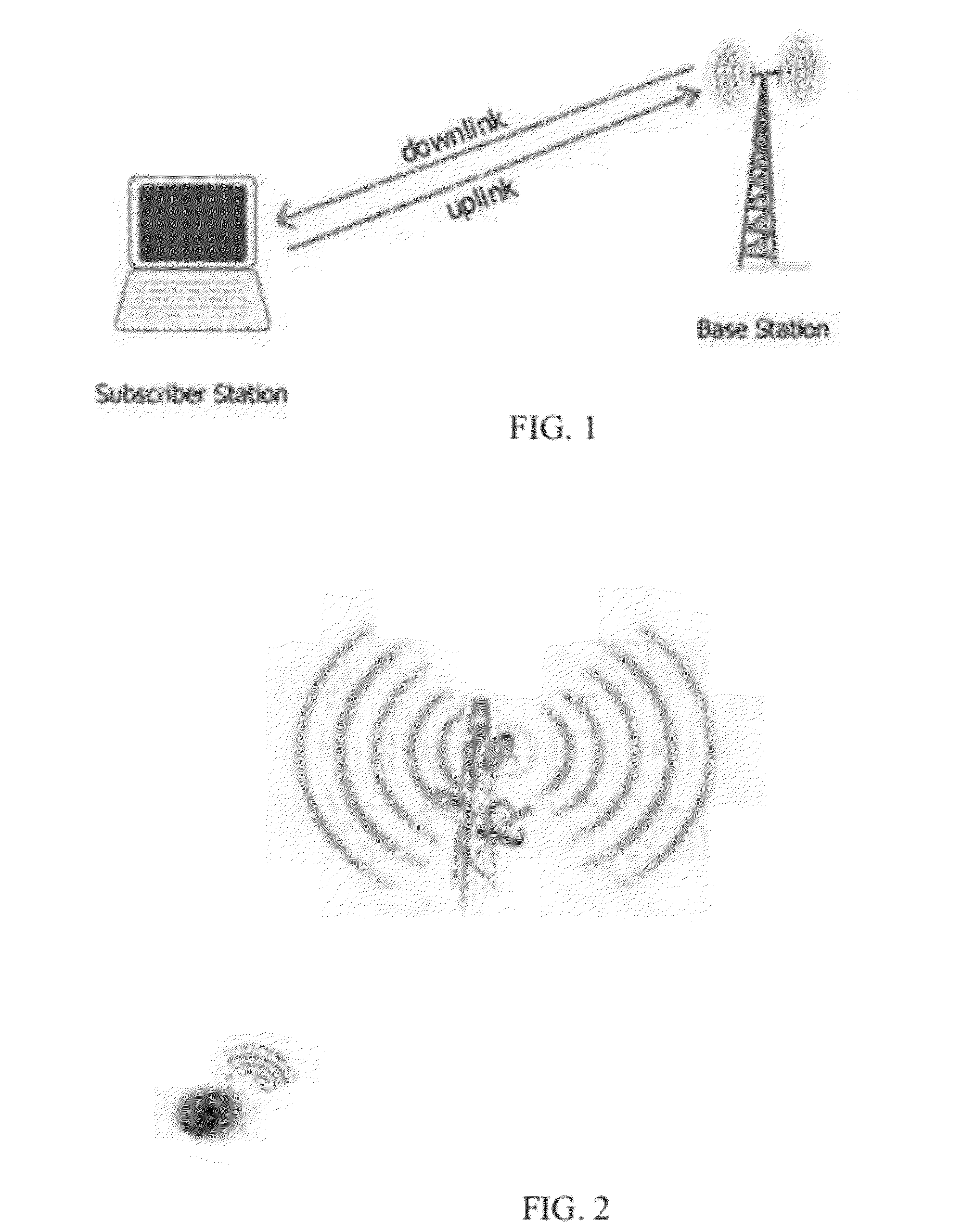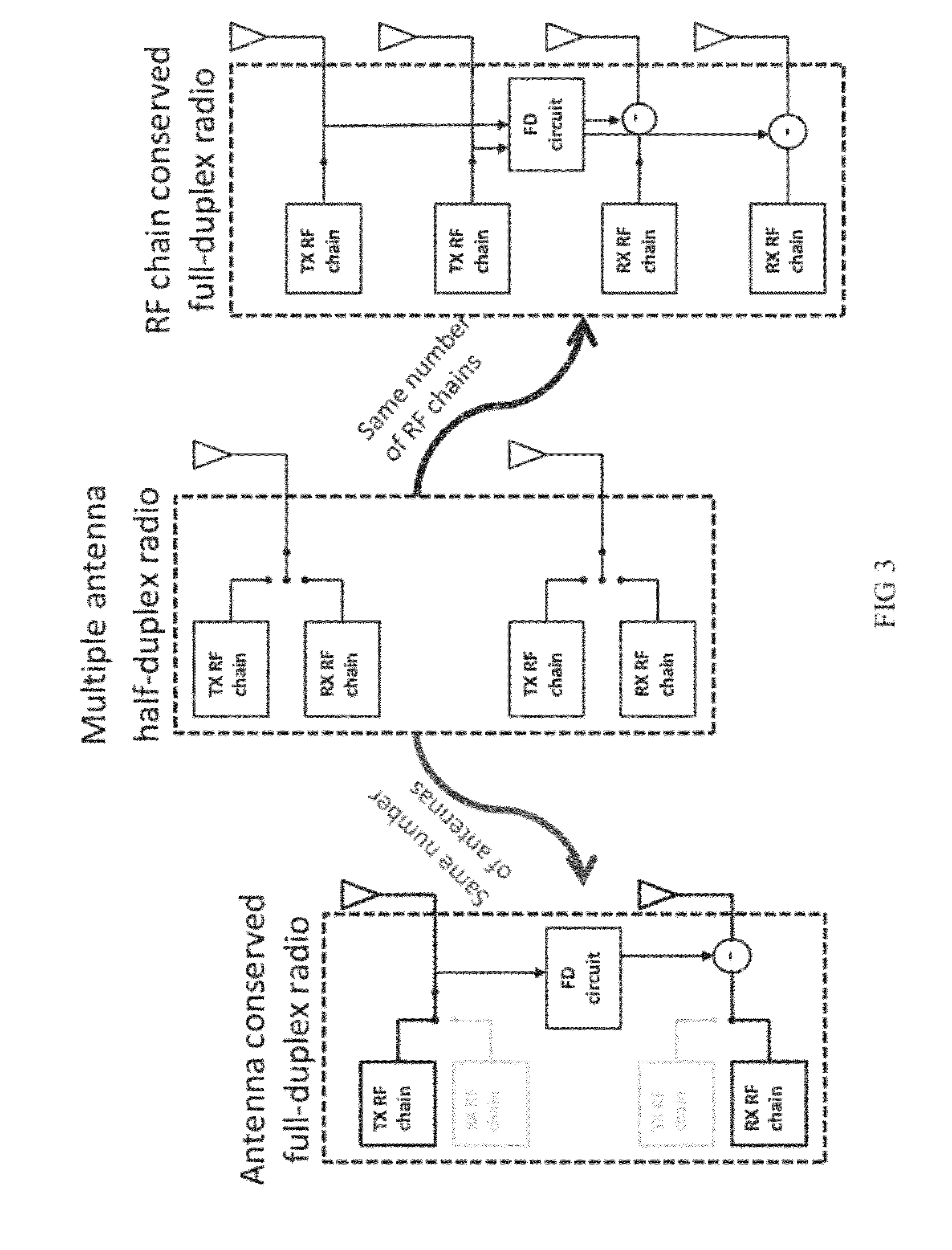Method For A canceling Self Interference Signal Using Passive Noise Cancellation For Full-Duplex Simultaneous (in Time) and Overlapping (In Space) Wireless transmission and Reception On The Same Frequency Band
a self-interference signal and passive noise cancellation technology, applied in the field of full-duplex simultaneous (in time) and overlapping (in space) wireless transmission and reception on the same frequency band, can solve the problems of inability to accurately recreate the signal intended to be received at the receiver, lack of availability of practical designs rather than inherent physical limitations,
- Summary
- Abstract
- Description
- Claims
- Application Information
AI Technical Summary
Benefits of technology
Problems solved by technology
Method used
Image
Examples
Embodiment Construction
[0039]The present invention is directed to method for a four-layer approach in order to enable full duplex operation at a terminal. It is noted that in the discussion below, reference to the self interference caused by local transmission as “noise” or sometimes as “interference” both mean the same. The four layer approach encompasses the following:[0040]1. Active noise cancellation in the air by generating active interfering signal to combat the effect of interference signal.[0041]2. Active noise cancellation in RF circuits and transmission lines, e.g., waveguides.[0042]3. Passive noise cancellation with analog noise canceller circuits.[0043]4. Passive noise cancellation with digital noise canceller algorithms.
[0044]The first layer is based on a technique where an active source is added to the system which destructively interferes with the locally transmitted self interference signals at the receive antennas in order to cancel the self interference signal while leaving the received ...
PUM
 Login to View More
Login to View More Abstract
Description
Claims
Application Information
 Login to View More
Login to View More - R&D
- Intellectual Property
- Life Sciences
- Materials
- Tech Scout
- Unparalleled Data Quality
- Higher Quality Content
- 60% Fewer Hallucinations
Browse by: Latest US Patents, China's latest patents, Technical Efficacy Thesaurus, Application Domain, Technology Topic, Popular Technical Reports.
© 2025 PatSnap. All rights reserved.Legal|Privacy policy|Modern Slavery Act Transparency Statement|Sitemap|About US| Contact US: help@patsnap.com



